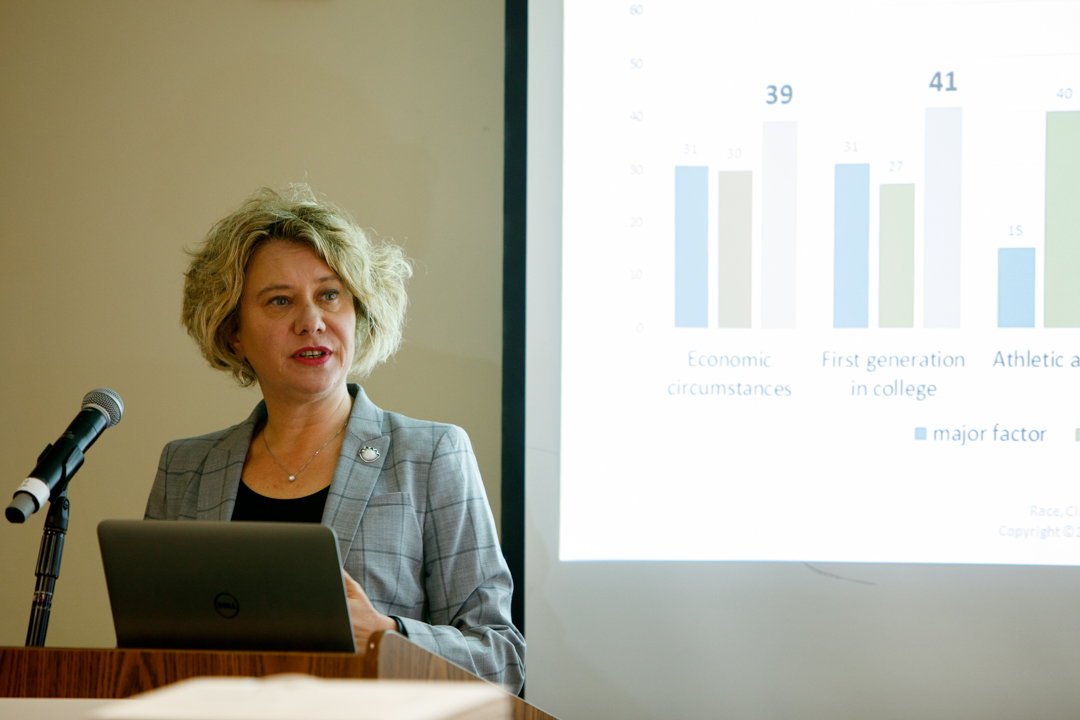By Ruth Steinhardt
After a midterm election in which Democrats seized 39 seats in the House of Representatives and Republicans gained two in the Senate, the George Washington University Graduate School of Education and Human Development and Education Week hosted a daylong summit Wednesday on the election’s possible effects on American education.
“The press and the academy are naturally partners,” GSEHD Dean Michael Feuer said of the collaboration. “We come to our work with different tools and traditions, but we are both in the business of free and independent inquiry and the supply of evidence to inform public policy.”
“2020 Vision: Education, Policy and Politics Beyond the Midterms” featured panels and keynotes from experts across the field of education, including educators, policymakers and activists.
Some guests fit several categories. A panel on K-12 education and the campaign trail featured math teacher and newly-elected Kentucky state representative R. Travis Brenda; former history teacher and newly-elected Oklahoma state representative John Waldron; and North Carolina school principal Aimy Steele, who was narrowly defeated this fall by a nine-term state legislature incumbent.
The teachers-turned-candidates agreed their students had played critical roles on the campaign trail as potential constituents, as articulators of their communities’ needs and as volunteers and mobilizers.
All three were driven to run for public office by frustration at state underfunding and dismissal of the public systems that affect their students’ lives—not just within the public schools, but in their broader contexts, as with Mr. Brenda’s constituents whose families struggle with the opioid crisis.
“You don’t get what you want for your kids by asking nicely,” Mr. Waldron said. “You have to be a little more assertive.”
The afternoon’s keynote conversation featured Education Week Deputy Managing Editor Mark Bomster, Dr. Feuer and longtime civil rights activist Wade Henderson, Joseph L. Rauh Jr., chair of public interest law at the University of the District of Columbia David A. Clarke School of Law.
Mr. Henderson and Dr. Feuer began their conversation by laying out the national demographic context in which all conversations about school funding and equity take place. But Mr. Henderson said those national statistics could hide educational trends at a local level.
As an example, he pointed to a lawsuit in New Jersey, which a group of civil rights activists filed to challenge an inequitable educational situation involving urban public schools in Mercer County. Most of the schools in question have a population of less than 1 percent white students.
“Concentrated race, concentrated poverty and segregated schools continue to be a proxy for the kind of investment our communities are prepared to make, and there is structural inequality that—unless we are prepared to address it—will never respond to the problems that these schools represent,” Mr. Henderson said.
And while well-meaning social programs may try to address the problem by sending floods of young teachers to these underfunded schools, Mr. Henderson said such solutions do not address systemic dysfunction.
“Trenton has an 89.1 percent poverty rate in its over 11,000 public school students, and yet we send teachers there who are barely experienced…[and] ill-prepared to deal with the problems that a city like Trenton or Camden or Patterson or Newark show for their students,” Mr. Henderson said. “If you’re looking for the first responders to poverty in our country, they’re teachers. And when we don’t prepare [them] adequately to address the problems of concentrated poverty and racial segregation, then we have a problem.”
The segregation within schools is a symptom of the segregation of communities, Mr. Henderson said, which means discussion about inequality in education has to include discussion of other social issues.
“To look at public education as a public education issue misstates the problem,” he said. “It’s also a question about fair housing.”
Mr. Henderson also said he was mildly optimistic about educational policymaking, at least on local and state levels, and pointed to legislators such as Rep. Bobby Scott (D-Va.) and Sen. Patty Murray (D.-Wash.) as voices for educational reform in the federal government. The greatest progress toward resolving inequality might be in state courts, he said.
“I’m putting a lot of my money on the lawyers,” Mr. Henderson said. “When they litigate issues, they bring issues to the surface and force policymakers to deal with them.”



